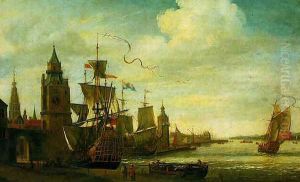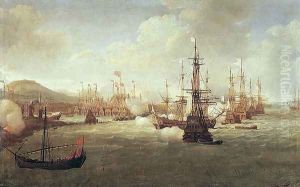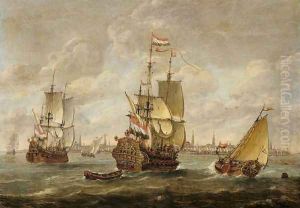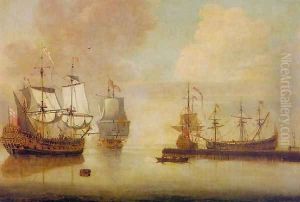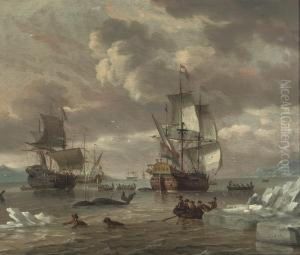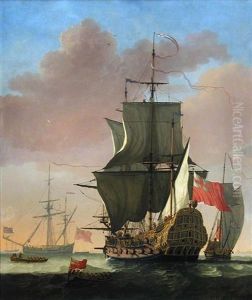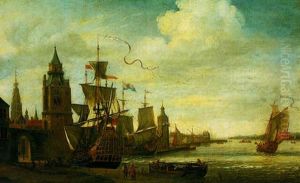Jan Karel Donatus van Beecq Paintings
Jan Karel Donatus van Beecq, also known as Johan Karel Donatus van Beecq or simply Jan van Beecq, was a Dutch Golden Age painter born in 1638 in Amsterdam. His artistic journey, however, is not as well-documented as some of his contemporaries, which makes his biography somewhat elusive and reliant on the scarce records and artwork that have been attributed to him.
Van Beecq's work primarily focused on marine scenes, and he is known for his skillful depiction of the sea, ships, and naval engagements. His style was influenced by the marine painters of the Dutch Golden Age, such as Willem van de Velde the Elder and Willem van de Velde the Younger, who were renowned for their mastery in capturing the intricacies of naval warfare and the serene beauty of Dutch seascapes. It is believed that van Beecq might have been a pupil or follower of the Van de Veldes, as similarities in technique and subject matter can be seen in his paintings.
Despite the lack of extensive personal records, van Beecq's paintings suggest that he had a deep understanding of maritime subjects, likely stemming from the Netherlands' rich nautical heritage during the 17th century, when the Dutch Republic was a major naval power. His works often depict ships with meticulous detail, from the rigging and sails to the play of light on the water, evoking the grandeur and peril of sea voyages during that era.
Jan van Beecq spent some of his life in France, as evidenced by his works that were signed in Paris. It is believed that he moved there around 1660 and found patronage under Louis XIV, which would have provided him with a broader audience and the opportunity to contribute to the flourishing art scene of the period. This international experience may have further enriched his artistic style and expanded his influence.
He died in 1722, leaving behind a legacy that, while not as widely recognized as some of his peers, represents an important facet of the maritime artistic tradition of the Dutch Golden Age. Van Beecq's paintings continue to be appreciated by art historians and collectors for their historical value and their contribution to the genre of marine painting.
